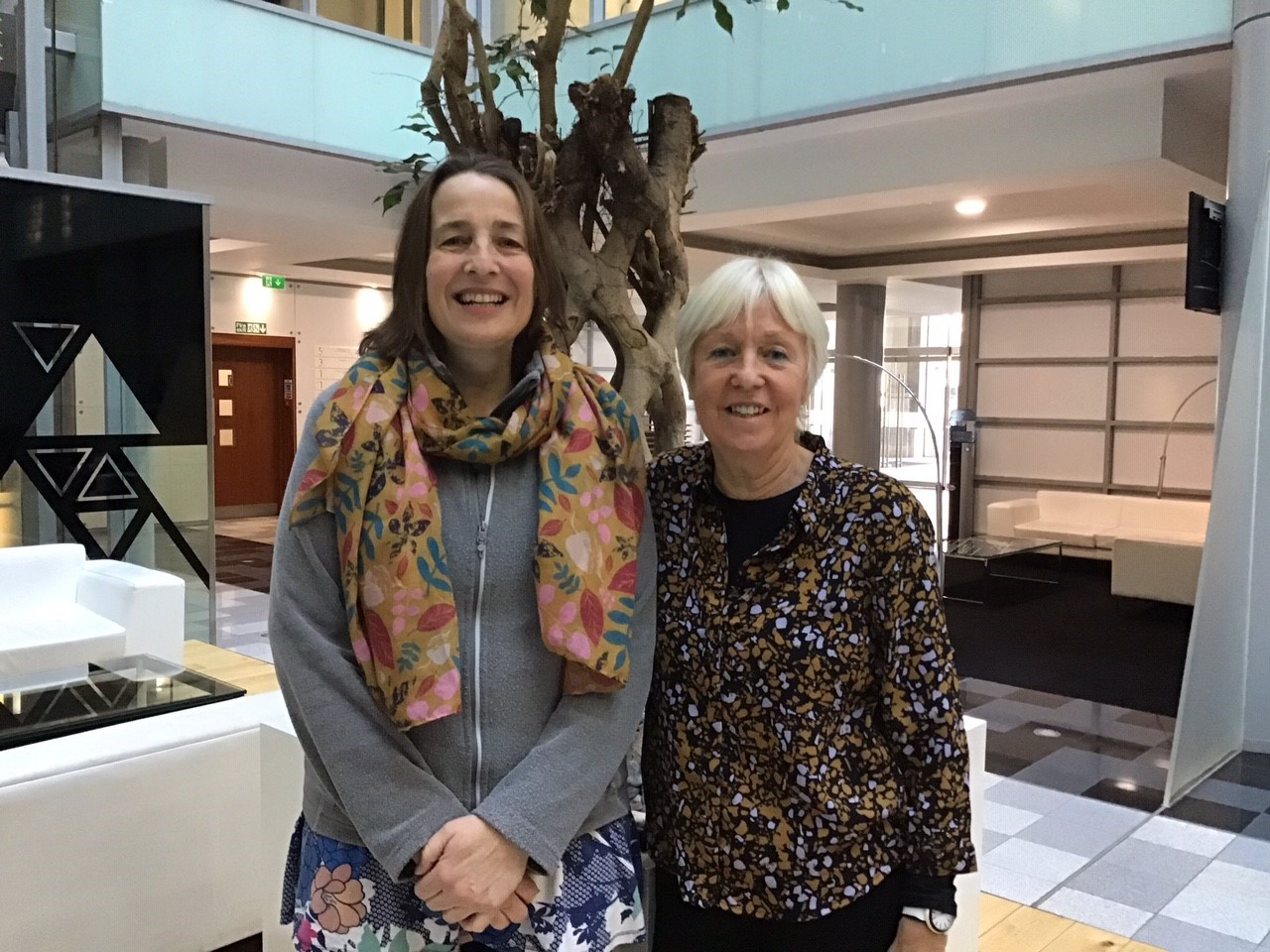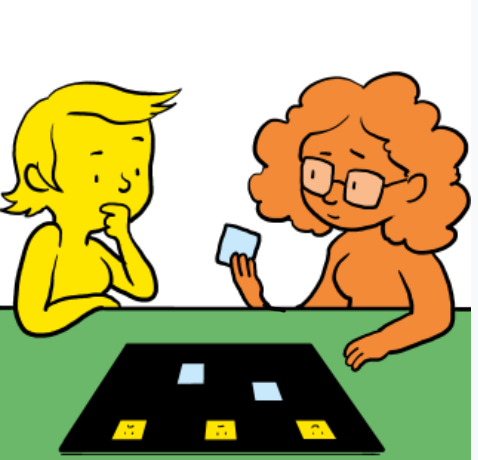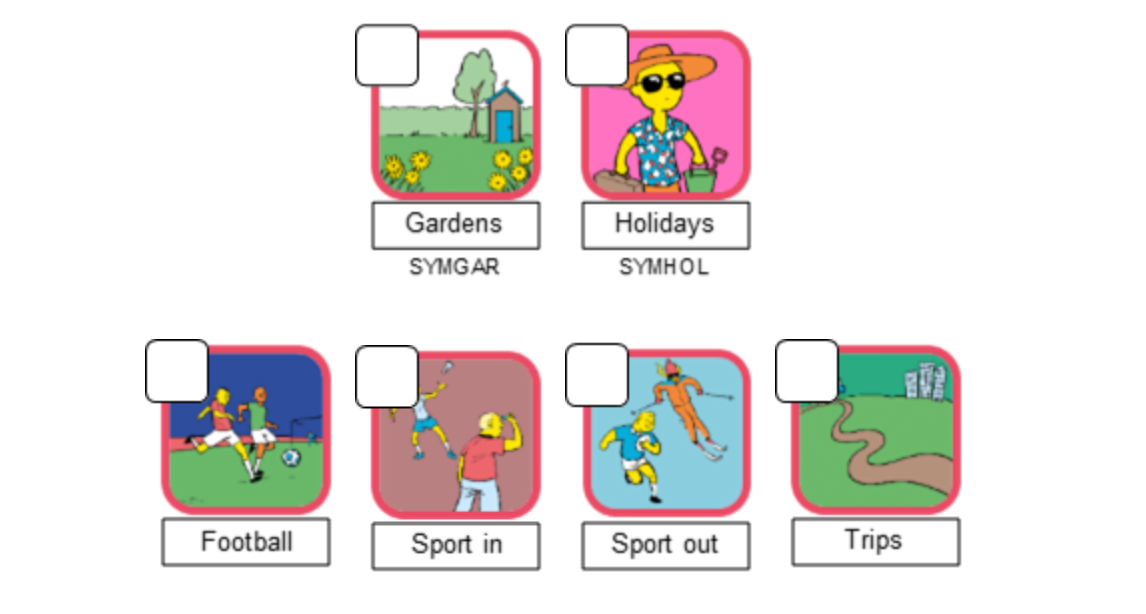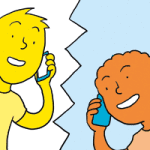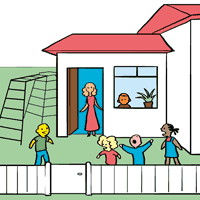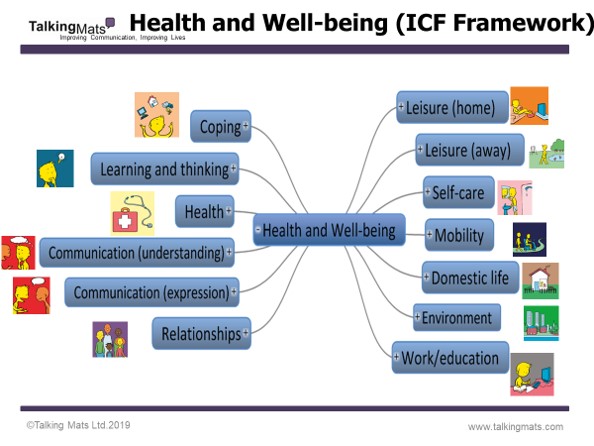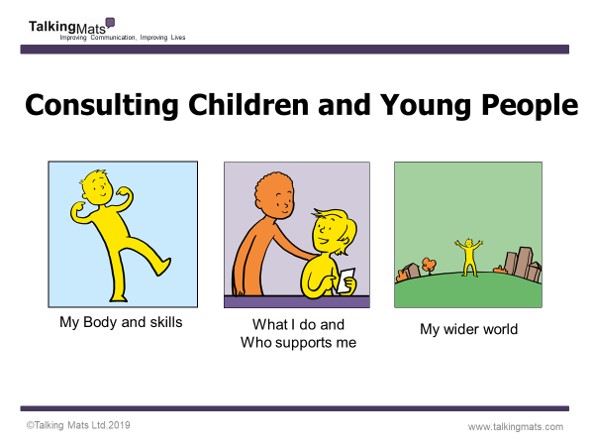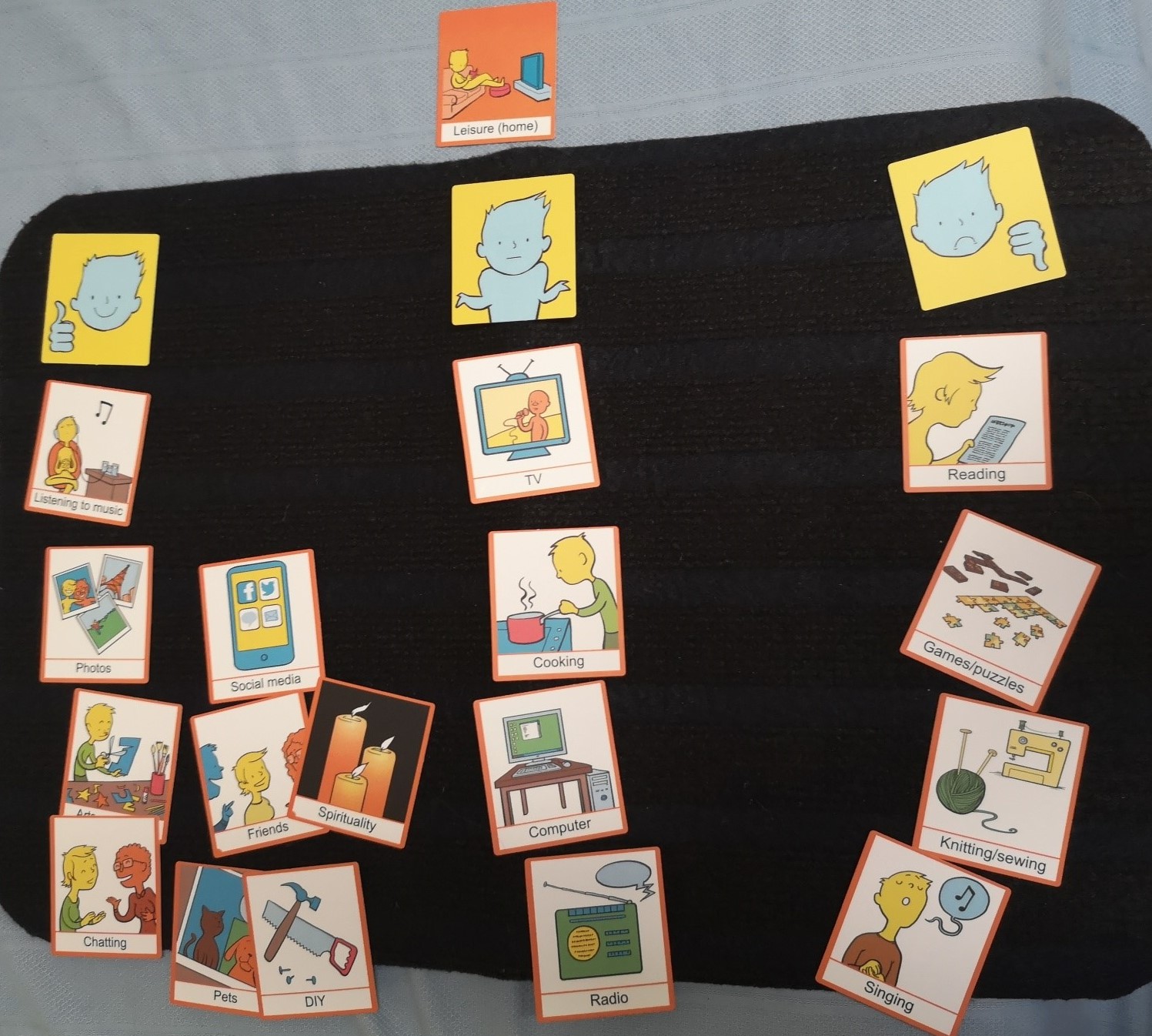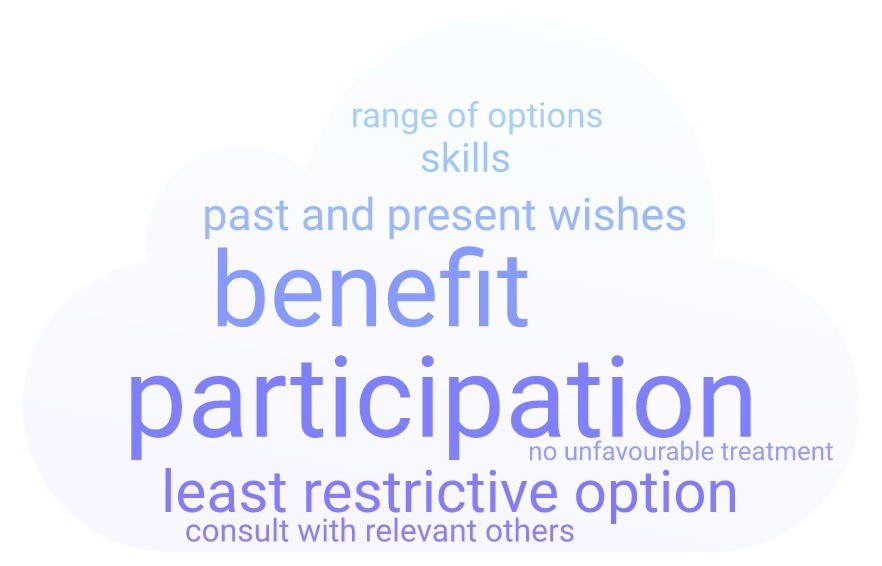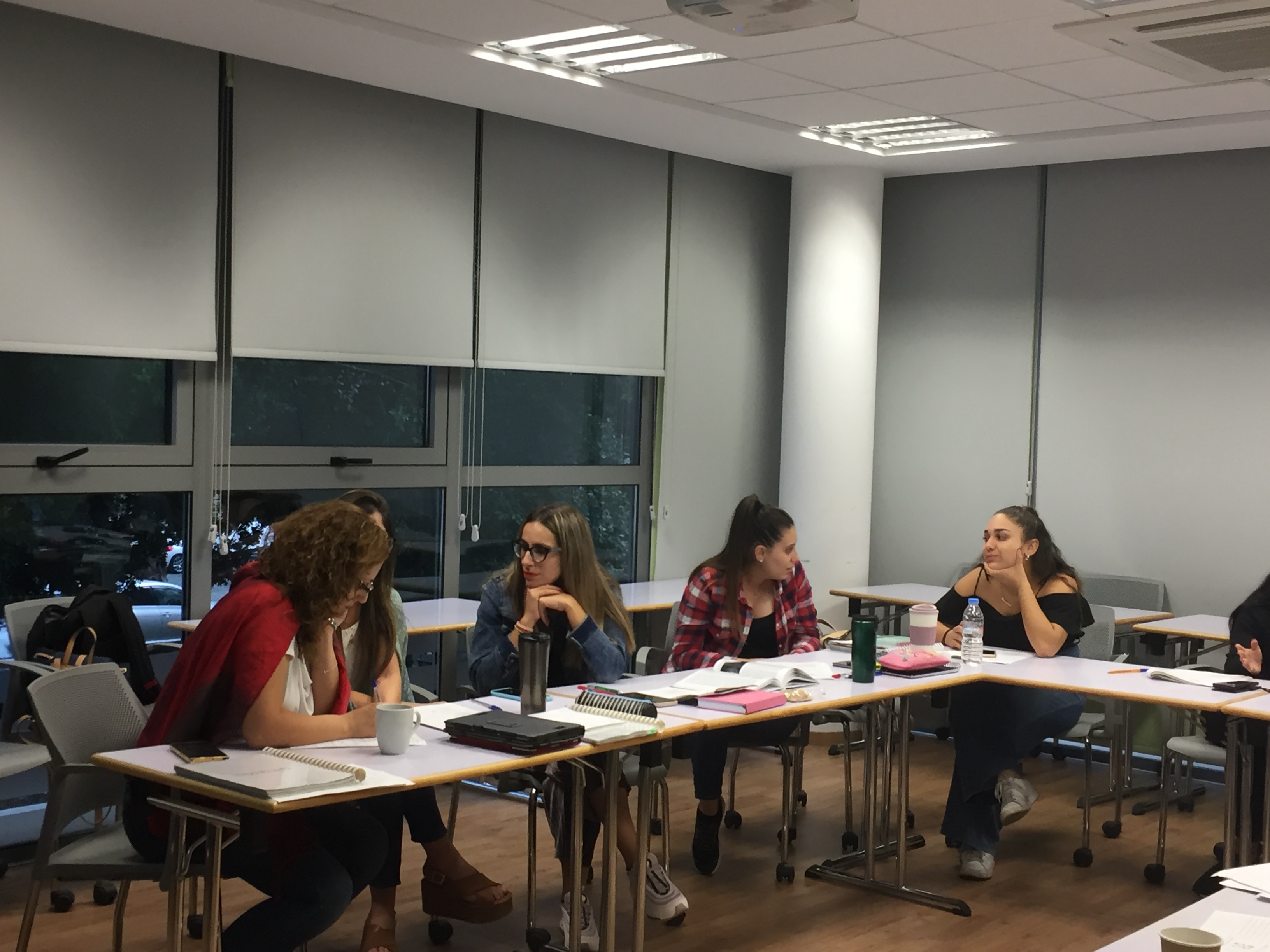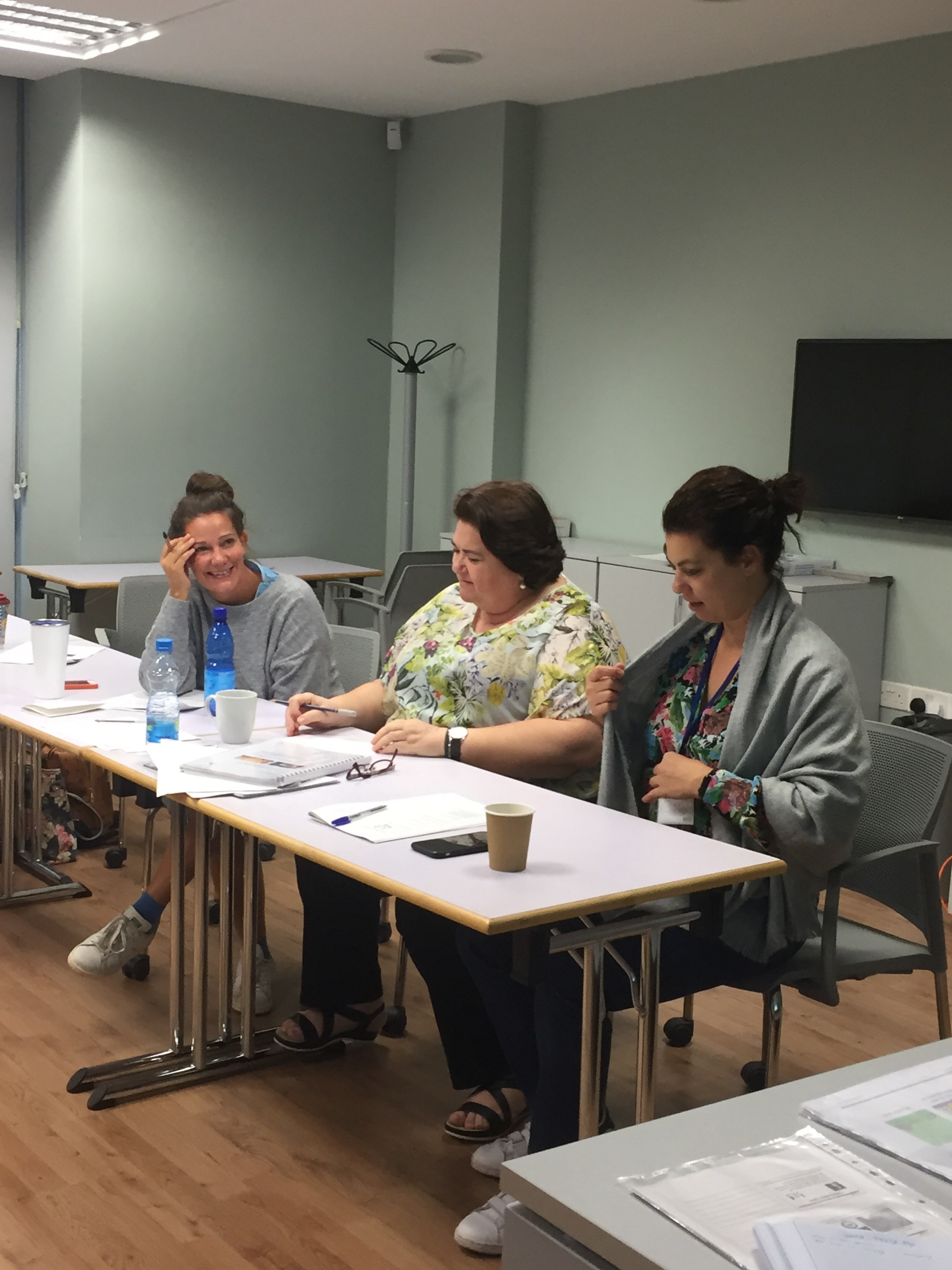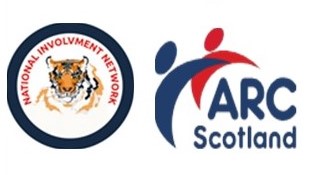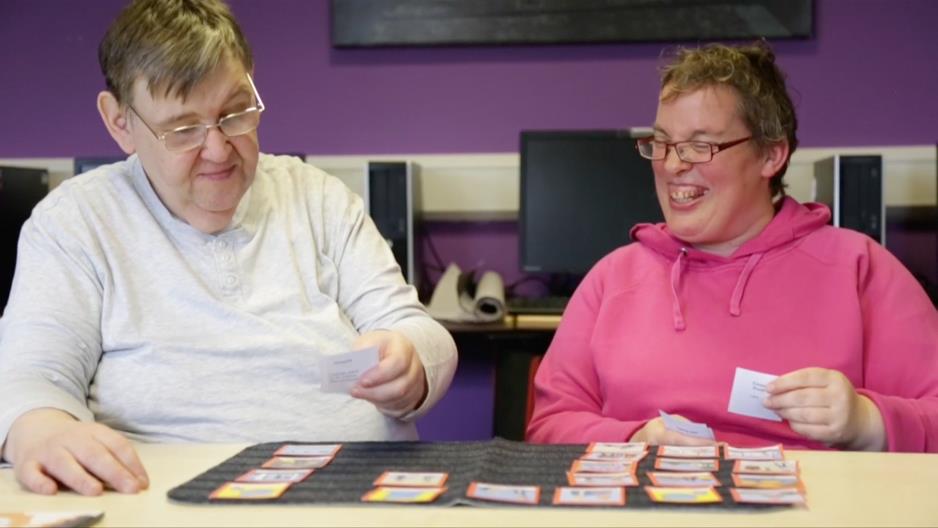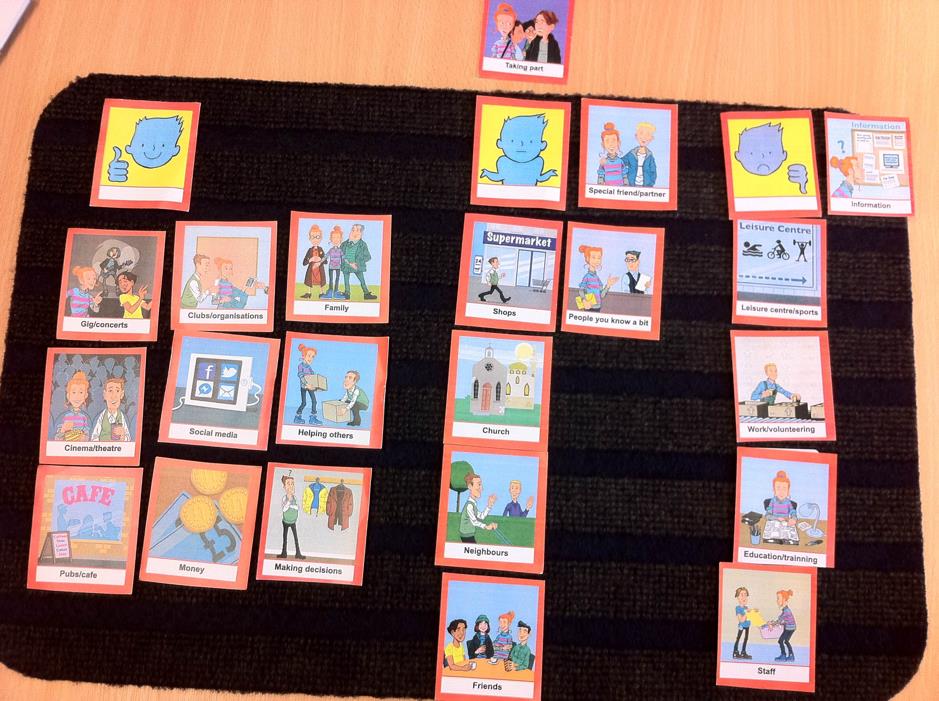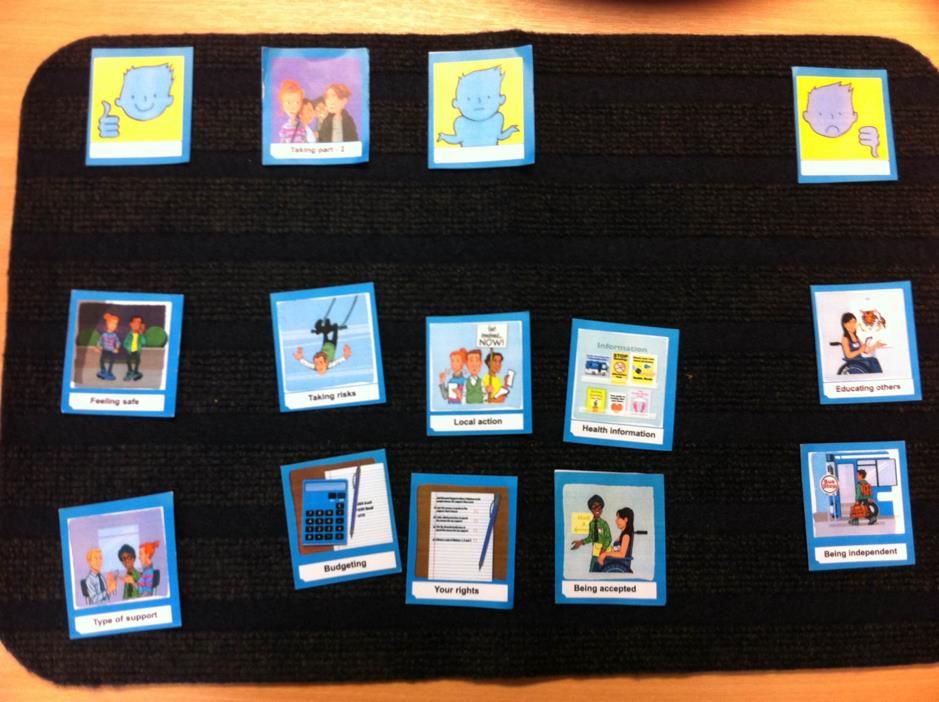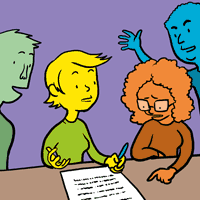Thanks to all the people who have expressed an interest in the Talking Mats research group . We are excited to see the range of research going on and how people are using Talking Mats as a research tool in a variety of settings e.g. universities, NHS, not for profit organisations, youth justice – and with such a wide range of client groups e.g. dementia , alternative and augmentative communication , children and young people, people with learning disabilities, and palliative care.
This is a virtual network and we are still exploring ways in which this could work, but it could involve an email network, virtual seminars and/or twitter chats.
If you are interested in being included, and have completed our Talking Mats Foundation Training course, we would love to hear from you.
The network will be coordinated by Dr Joan Murphy, Founding Director of Talking Mats, and Dr Jill Bradshaw (Tizard Centre, University of Kent) who was appointed as our Honorary Associate in November 2019 https://www.talkingmats.com/honorary-research-associate/
If interested please complete and send the following form to info@talkingmats.com:
Application-to-join-TM-research-network
Many thanks to our new Talking Mats Research Associate, Dr Jill Bradshaw (Tizard Centre, University of Kent), for this latest blog focusing on how Talking Mats can help people with communication difficulties to express themselves – to help work out the reasons for behaviour that challenges.
We know that around 10-15% of people with intellectual and developmental disabilities display behaviour that can be challenging. This might include hitting out at other people or injuring themselves. These behaviours can serve very important functions for the individual (e.g. to avoid something unpleasant or to get a need met). When we try to help make things better, we often focus on improving communication, quality of life and health and wellbeing more broadly.
How do we work out why behaviours that are challenging occur?
We often spend time observing the person and talk to carers and staff who work with the person to gain information about what is working well and what might help. This is part of a functional analysis. Here, the aim is to identify the factors that have led to and are maintaining the behaviours displayed. Traditionally, we have not really asked people directly what they think. This is partly people who display behaviour that challenges almost always have complex communication challenges.
How can we better access views of children and adults and would Talking Mats be one way of gaining views?
Together with Nick Gore, we have been working on ways of using Talking Mats to enable children and adults to give their views. We developed a series of mats focusing on:
- Likes and dislikes;
- Difficult behaviours;
- Things that help;
- Things that don’t help;
- General preventative variables.
What happened when we used the Talking Mats?
People were able to use these Talking Mats to tell us about what was important to and important for them. Some information was similar to reports from carers and staff and some information was in addition. For example:
- we gained information about preferred activities, such as riding bikes and preferred snacks. Doing things we like to do is important for all of us!;
- people gave us information about their difficult behaviours and where these took place;
- people were also able to give us at least some information about what made a bad day and what helped on a bad day. This information helped to inform support strategies.
You can read more about this work here: https://kar.kent.ac.uk/67033/1/PDF_Proof%20%283%29.pdf
Using Talking Mats certainly enabled some people to give their views. It was particularly helpful as a way of talking about difficulties, where a focus on the mat rather than on direct questioning was useful.
As expected, more people were able to access the more concrete topics we discussed and the more abstract topics were more difficult. We have also been working with the Challenging Behaviour Foundation to develop a range of methods (including Talking Mats) to help to gain the views of people with communication challenges. You can read more about this work here:
To view Jill’s presentation about this topic from our Talking Mats is 21 event last August, click here: TM and PBS final version for handout
If you are interested in Talking Mats and Research and have completed our Foundation Training Course, you can find out more about our new Talking Mats Research Network Group by emailing Jill at J.Bradshaw@kent.ac.uk, and watch this space for a new blog all about the group – coming soon!
In the second of two blogs, we talk about how using Talking Mats Resources can help people have better conversations.
Our first Resources blog (https://www.talkingmats.com/resources-with-training/) focused on the resource bundles which are available to purchase with our Foundation Training course. This second blog focuses on the resources which are available to people who have completed our Foundation Training course.
Remember that most of our resources are available in both low-tech, and digital, formats.
Post-Training
Once you have accessed one of our Foundation Training courses, you can purchase our resources at a reduced rate:
1. You can buy these in established sets using our post training order form, for example you may choose to buy a social care set, the secondary Children and Young people resource, or one of our Advanced sets (see 3. below). These sets all have 3 topics of conversation in them.
2. New for 2020! – you can now buy individual topics of conversation from our ‘pick and mix’ selection, which includes topics from our Health and Well-being Resource (also available as a bundle purchase with our Foundation Training course), as well as our Conversation Sets:
3. Our advanced sets, for example Keeping Safe and Thinking Ahead, are only available for those who have completed foundation training:
- Keeping Safe: Give people time to reflect on their lives and raise concerns using this resource. This can help you to explore sensitive issues in a non-threatening way by creating a listening space, simplifying abstract ideas, supporting thoughts while encouraging expression and decision making.
- Thinking Ahead: Support people to express their views and help them plan for end of life using this resource. It will also be helpful for many other people to consider future options in their lives.
We are also planning to add a ‘how was school today?‘ topic to our ‘pick and mix’ selection soon – so watch this space!
To find out how our resources could help you in your professional area of work/setting, check out these links here: https://www.talkingmats.com/where-you-work/
For more information about these resources please contact the office on 01786 479511 or email info@talkingmats.com
In the first of two blogs, we talk about how using Talking Mats Resources can help people have better conversations.
Talking Mats provides a visual framework to help people express their views and feelings, using a selection of communication symbols that cover a variety of topics. Talking Mats resources are used by many professionals across a wide range of health, social care, residential, and education settings. Most of our resources are available in both low-tech, and digital, formats. In this first blog we focus on the resource bundles which are available to purchase with our Foundation Training course.
Our resources are available to buy through our website (https://www.talkingmats.com/shop/) however we do strongly recommend completion of one of our Foundation courses (https://www.talkingmats.com/training/foundation-training/) to get the most benefit from Talking Mats – and to use it to its full potential. If you add a Health and Wellbeing, Consulting Children & Young People, or Social Care resource pack bundle to your training you only end up paying £65 for the training day itself which is a great deal!
Resource Bundles available to purchase with Training
Health and Wellbeing Bundle:
These packs are based on the ‘activities and participation’ domains from the WHO ICF framework and includes 9 topics which are relevant to people, regardless of their health, disability or where they live around the world. We have translated these into more ‘user-friendly’ language and have generated symbols to represent each topic.
In addition to the 9 topics from the Activity and Participation domains, we have also included Environment and Health, which are important topics within the ICF framework and in people’s lives.
Consulting Children and Young People Bundle:
These packs are based on ‘Getting It Right For Every Child’ (GIRFEC), a Scottish framework for everyone to use when working with children and young people. There are three broad topics which are relevant to any child or young person’s life. This resource can also be used with SEND reforms in England. There are different packs for each developmental stage: Early years (ages 3 to 7); Primary (ages 7 to 12) and secondary (age 13 upwards).
Best Value Bundle: This option includes the Health and Wellbeing and Consulting Children and Young People bundles above, as well as our Social Care resource packs, providing a complete set of resources to support communication on a comprehensive range of topics for children and adults.
If you’d like to book a place on one of our Foundation Courses and would like to know more about our bundle options, get in touch with us at info@talkingmats.com
Find out more about our Foundation Training course here: https://www.talkingmats.com/training/foundation-training/
Many thanks to Charlotte Phillips and Laura Douglas, SLTs at Blossom House School, New Malden, for this latest guest blog which looks at how Talking Mats are used for therapy goal setting within the context of a specialist school for children with SLCN. Further information can be found on their RCSLT Poster Presentation (September 2019) here – AAC Poster RCSLT Conference September 2019
Goal setting can be a labyrinth to navigate! Do these goals reflect the pupil’s own views? Is there a discrepancy between staff and pupil ideas for goals? Are these goals motivating? Are the goals functional? Are pupils avoiding goals they would like to achieve for fear of failure? Add to this the language rich dialogue required in order to establish goals and similar to a maze you may encounter dead ends, twists, turns and a feeling of entrapment. How can we ensure we do not assume needs and that the goal setting process is collaborative and person-centered? Enter Talking Mats; a tool which enables you to make sense of the maze, like the lookout tower in the middle it allows you to have a clear view of how everything fits together. You’ll now find the goal of exiting is far easier!
How can Talking Mats help?
At Blossom House the Talking Mats framework is utilised at the beginning of therapy to support pupils with DLD and specific learning difficulties to identify areas of their strengths and needs and develop personally meaningful goals that are associated to these areas. Some of the pupils are competent verbal communicators within a social context but due to the emotive subjects they may be exploring they may not be able to access these skills within therapy. Talking Mats are also used to baseline students’ self-awareness alongside prompting pupil voice. Talking Mats are tangible and have low linguistic demands which allows students with kinaesthetic and/or visual learning style preferences, and communication needs to engage in these discussions.
Case Study 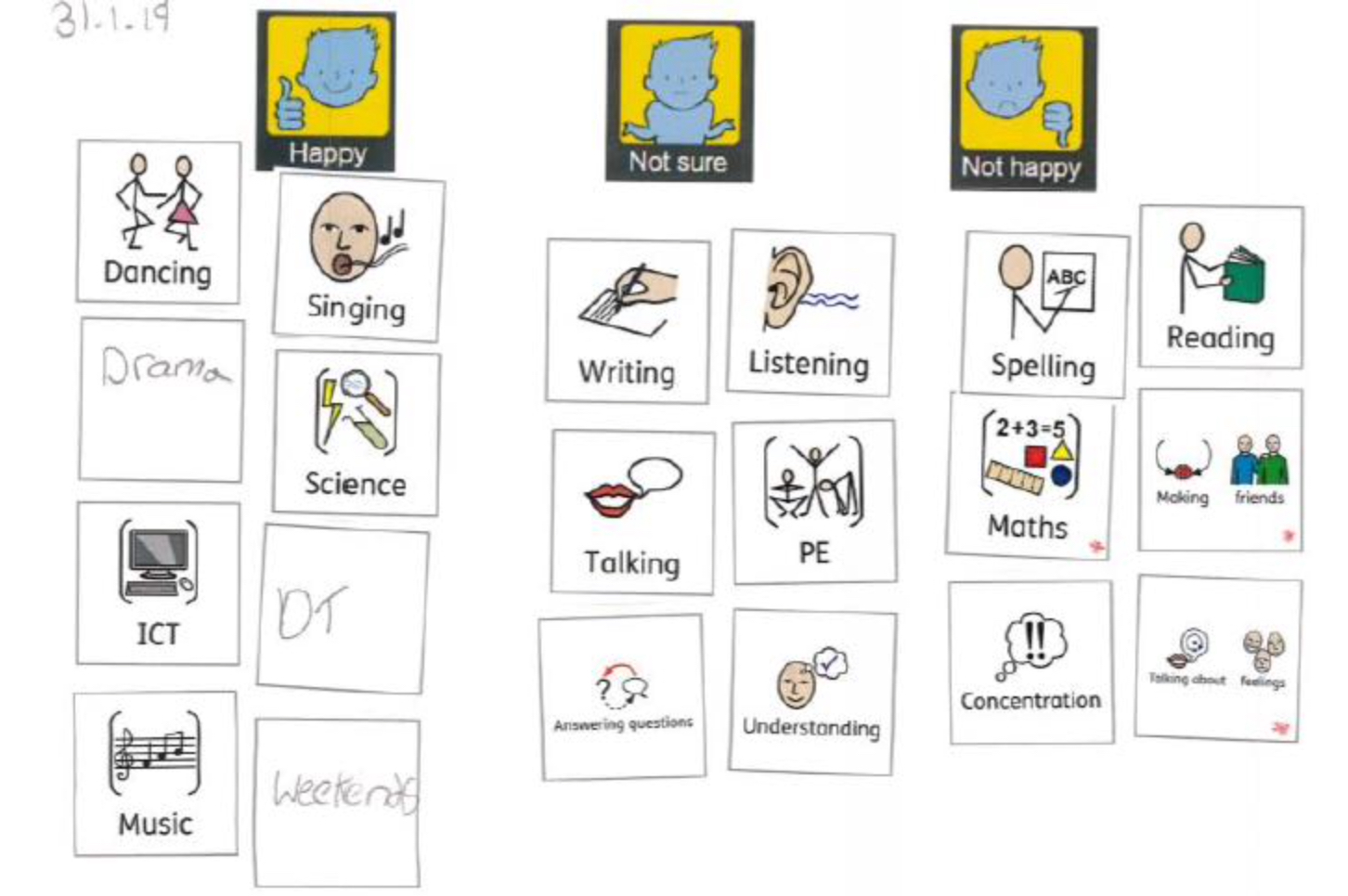
Next Steps
The school would now like to embed Talking Mats as a whole school approach. The first step will be Talking Mats forming a core part of School council meetings to ensure that every pupil has a voice. There will be consultation with SLTs around integrating Talking Mats into the Annual review pupil voice protocol and into therapy outcome measures. This will be facilitated through the use of the digital talking mats package which allows for staff to create mats with pupils on the move, with minimal resources. These can then be emailed to staff and pupils which makes this information practical for staff to use within the context of their extremely busy school day. The use of technology to facilitate self-advocacy is an interesting field which needs further investigation.
If you are feeling inspired and would like to access Talking Mats training to enable you to introduce a similar approach in your school take a look here –
https://www.talkingmats.com/training/foundation-training/
To find out more about our resources, including our Digital Talking Mats app, check out this link here –
https://www.talkingmats.com/shop/
Many thanks to Georgia Bowker-Brady, Advanced Specialist SLT (Berkshire Healthcare Foundation Trust) for this latest guest blog.
I attended the Talking Mats training in June and I work in both dementia care and acute mental health in-patient services.
I had initially imagined that I would primarily be using the Talking Mats to support the dementia patients.
However I’ve been surprised to find that I have been increasingly using Talking Mats with functional patients and it has been a really positive tool when discussing with patients about their self-care, the care they are receiving in the hospital and opinions on discharge.
Due to their mental state, many of the patients may find it hard to organise and express their thoughts, and if patients are hypomanic it can be difficult for professionals to guide the topic to get meaningful information, but Talking Mats has really helped with this! It has also been pertinent in establishing patients’ insight levels and gaining better understanding of their impression of the current situation.
Here is a photo of one my mats from the psychiatric adult acute wards. This was for a patient who is severely low in mood and has relatively recently gone through a traumatic incident. The ward staff and OTs have had difficulty gathering any information about what she ordinarily enjoys doing in order find some activities to try and engage her with.
The staff stated that the patient would simply report she doesn’t enjoy anything and questions about what she used to enjoy received no answer. I went and did a joint session with the OT where I asked about what she enjoyed doing before this incident and we did the mat (see picture below) in a matter of minutes.
This can now provide a starting point for considering areas for trying to encourage some behavioural activation.
We then extended it by using an emotions wheel to ask how she felt about certain activities available in the hospital. We were able to establish that she felt fearful about trying new things and sad about carrying out certain activities she used to do prior to the incident.
It is wonderful to hear such a great example of Talking Mats in action – if you have any stories you would like to share, please get in touch with us at info@talkingmats.com
Many thanks to Claire Wiseman & Ann Lafferty from The Advocacy Project (Scotland) for this guest blog, including a great example of how Talking Mats helped a young woman with learning disabilities and psychosis share her views about being in hospital, receiving medical treatment and her preferences in respect of future post discharge welfare decisions:
For some time, The Advocacy Project have been thinking about how we could use the Talking Mats Framework to support people going through legislative processes such as the Mental Health (Care and Treatment) (Scotland) Act 2000, Adults with Incapacity (Scotland) Act 2000 and the Adult Support and Protection (Scotland) Act 2007.
Recently the Mental Welfare Commission published a best practice guidance on Supported Decision Making – https://www.mwcscot.org.uk/good-practice/guidance-advice, which we referred to as part of our presentation for the recent Talking Mats is 21 celebrations (click here to see the presentation Talking Mats and Supported Decision Making PP 2 (1)). The feedback from this session was that ‘yes’ there is a need for symbols to support legislation. As accredited trainers, we’ve also been asked when we’re delivering training to lawyers, Mental Health Officers, Social Workers, support workers and other advocacy organisations if there are specific symbols related to Supported Decision Making, particularly with regard to legislative issues.
Here is one of the Supported Decision Making and Talking Mats examples shared in our presentation:
One of our staff supported a young woman with a learning disability who was thought to be experiencing a psychotic episode. She had been detained in an in-patient learning disability unit under the Mental Health (Care and Treatment) (Scotland) Act 2003 on a Short Term Detention Certificate. The clinical team then made an application for a Compulsory Treatment Order, which was granted. Later, when discharge planning was in progress, an application for Welfare Guardianship was made under the Adults with Incapacity (Scotland) Act 2000.
Although the young woman was able to communicate verbally, the effects of the psychosis combined with her learning disability meant that her conversation was discursive and she was very easily distracted. Using a combination of Talking Mats and our additional symbols over a number of sessions, the advocacy worker managed to ascertain her views about being in hospital, receiving medical treatment and her preferences in respect of future post discharge welfare decisions.
The Talking Mats reports were submitted as evidence at two mental health tribunal hearings and the Welfare Guardianship hearing at the sheriff court. We received positive feedback from the Curator Ad Litem, Mental Health Officer and Sherriff regarding the reports as they had never had Talking Mats reports submitted before during these proceedings.
The use of Talking Mats had been instrumental in supporting the young woman to put forward her views and ensuring an outcome she was happy with.
Going forward, Talking Mats and The Advocacy Project will be exploring the possibility of a symbols set for Supported Decision Making and legislation. We are currently looking at funding possibilities.
A fantastic example of the power of Talking Mats – if you have any Talking Mats stories you would like to share, please get in touch! Just send me an email at laura@talkingmats.com
Many thanks to our Talking Mats Founder, Dr Joan Murphy, for this latest blog talking about the training course she recently delivered at the Cyprus University of Technology.
Cyprus is a beautiful Mediterranean island with a population of approximately 1 million.
I was invited by Dr Eliada Pampoulou to run a 2-day course on Talking Mats for 12 Speech and Language Therapists, some of whom are masters students and some, lecturing staff at the Cyprus University of Technology. The Cyprus University of Technology founded the first Department of Rehabilitation Sciences in Cyprus and the Department offers the first public recognised university bachelor degree in Speech Language Therapy / Speech Language Pathology in the Greek language (https://www.cut.ac.cy/faculties/hsc/reh/).
Day 1 was a Talking Mats foundation training course and Day 2 focused on discussion around capacity, research and clinical applications. This model worked very well as the participants were able to think about and discuss how to apply the training immediately.
Some of the immediate plans of the participants were both clinical and research oriented and are outlined below:
- To administer the Greek Stroke and Aphasia Quality of Life Scale (SAQOL-39) with healthy people over 50 both with the text version and an adapted Talking Mats version quality and to examine which they prefer.
- To use Talking Mats both with people with people with aphasia and their carers in order to share their understanding about the communication skills and needs of people with aphasia.
- To use Talking Mats as a tool to identify the factors that are related to AAC system acceptance or abandonment by focusing directly to the views of people with complex communication needs
- To use Talking Mats as a goal setting tool for both paediatric and adult population
- To use Talking Mats to gets clients feedback about therapy services
- To use Talking Mats for student appraisals regarding their clinical training
Dr Eliada Pampoulou has created the first Talking Mats centre in Cyprus which aims to gather all people who received training every few months to share their experiences and support each other to embed Talking Mats in practice and research.
We hope that Eliada will come to Stirling next year to gain her Talking Mats licence to enable her to train others and extend the reach of Talking Mats even further.
We regularly run our Licensed Trainer 2-day courses at our base in Stirling – if you have attended Talking Mats Foundation Training and would like to train other people find out more here:
https://www.talkingmats.com/training/train-the-trainers-accredited-training/
Many thanks to Paddy Carstairs, Development Worker (NIN) at ARC Scotland, for this guest blog describing the recent Talking Mats ‘Charter for Involvement’ project.
The National Involvement Network (NIN) is a large group of people who get support from different organisations across Scotland. Members meet to share ideas and experiences of being involved in things that affect their lives. In 2015 NIN published the Charter for Involvement. The Charter explains in their own words how people want to be more involved in:
- the support they receive
- the organisations that support them
- the wider community
Organisations are invited to sign up to the Charter. This means making a commitment to put the Charter into practice. At time of writing 81 organisations, including 7 H&SCPs have done so.
NIN members wanted to make sure that more people could engage with the Charter. In particular it wanted to help people express their views on living independently and taking part in their communities.
In partnership with Talking Mats and ARC Scotland eight NIN members trained in how to use a Talking Mat. They then created and designed a Talking Mat for the Charter for Involvement, using images that featured in the Charter. The theme was “Taking Part” and came in two stages, firstly using concrete images and then more abstract ones. A film was made to record the experience of NIN members developing and trying out the new tool.
With the help of the organisations that support them, NIN members piloted the new Charter Talking Mat and conducted 60 interviews with supported people. This helped everyone learn about what worked well and not so well, and changes were able to be made.
Just as importantly, it showed that people who get support were able to use a Talking Mat to help other supported people make changes and improve the support they receive. NIN members found that when thinkers gave a card the thumbs down, as listeners they were able to support people to seek changes to their support that they wanted, or pass on information that would help improve their lives. Some thinkers said they felt more comfortable doing the Talking Mat with another person who gets support.
These experiences have been recorded in a film called Talking Mats Stories. In it NIN members describe the impact the Charter Talking Mat has had, the changes that were made possible to enable people do things they wanted, and the confidence and satisfaction they drew from being able to help other supported people.
Talking Mats Stories can be viewed at https://www.youtube.com/watch?v=1aer7v4fyFU&t=3s
Or by visiting the NIN page on the ARC Scotland website – https://arcscotland.org.uk/involvement/national-involvement-network/
Talking Mats Stories was produced by Media Education
Organisations that supported NIN members to produce the Charter Talking Mats were: the Action Group, Hansel, Turning Point Scotland, Cornerstone, Streets Ahead Borders, the Redwoods Caring Foundation and Hillcrest Futures (formerly Gowrie Care)
Paddy Carstairs
Development Worker (NIN)
ARC Scotland
If you are interested in finding out about Talking Mats Projects check out this link – https://www.talkingmats.com/projects/
And do get in touch if you’d like to discuss any potential projects – we would love to hear from you!
Many thanks to Lynn Blair, SLT (NHS North Lanarkshire) for writing this guest blog describing a recent project in which she and her colleagues used Talking Mats to gather the thoughts of secondary-aged pupils with social, emotional and behavioural support needs:
Do you remember your school janitor? Was he/she a cheery soul who you enjoyed talking to? Perhaps there was another member of school staff who you trusted and felt you could chat with. Secondary school can be a challenging environment for any teenager, let alone those who have speech, language and communication needs (SLCN). Young people need adults in their lives who they can feel at ease talking with.
The purpose of our recent project (See Lanarkshire SLT SEBN Poster 2019 and Lanarkshire SEBN Project Summary) was twofold. Firstly we wanted to find out how many of the young people in our local secondary schools for pupils with social, emotional and behavioural needs (SEBN) had language and communication difficulties. We also wanted to hear about the impact of those support needs by gathering the thoughts of the pupils themselves and that’s the focus of this blog.
We have to admit we were a bit anxious before we met with the pupils. Would these young men and women even give us the time of day with our friendly faces, mats and pictures? In the actual event, for the most part the tool was met with curiosity and then full engagement. The young people quickly grasped the idea. Some did not speak at all as they placed the images and others used the opportunity to tell us a great deal about how they felt about talking to different people in their lives and in different settings.
The information that we gathered is now being used to plan evidence-based speech and language therapy services to the school and young people. The use of Talking Mats gave us interesting information like the fact young people felt auxiliary staff such as janitors and assistants are often easier to talk with than teachers and as a result, we are thinking about how we involve all school staff in future events.
We are only too aware that the young people we met have often felt excluded from other people and from certain places. Talking Mats gave them the opportunity to be heard and we’re excited to consider how we can use them in the next phase of our work to support their communication needs.
If you are feeling inspired and would like to find out more about accessing Talking Mats Training – check out this link here: https://www.talkingmats.com/training/
 Online training login
Online training login 

